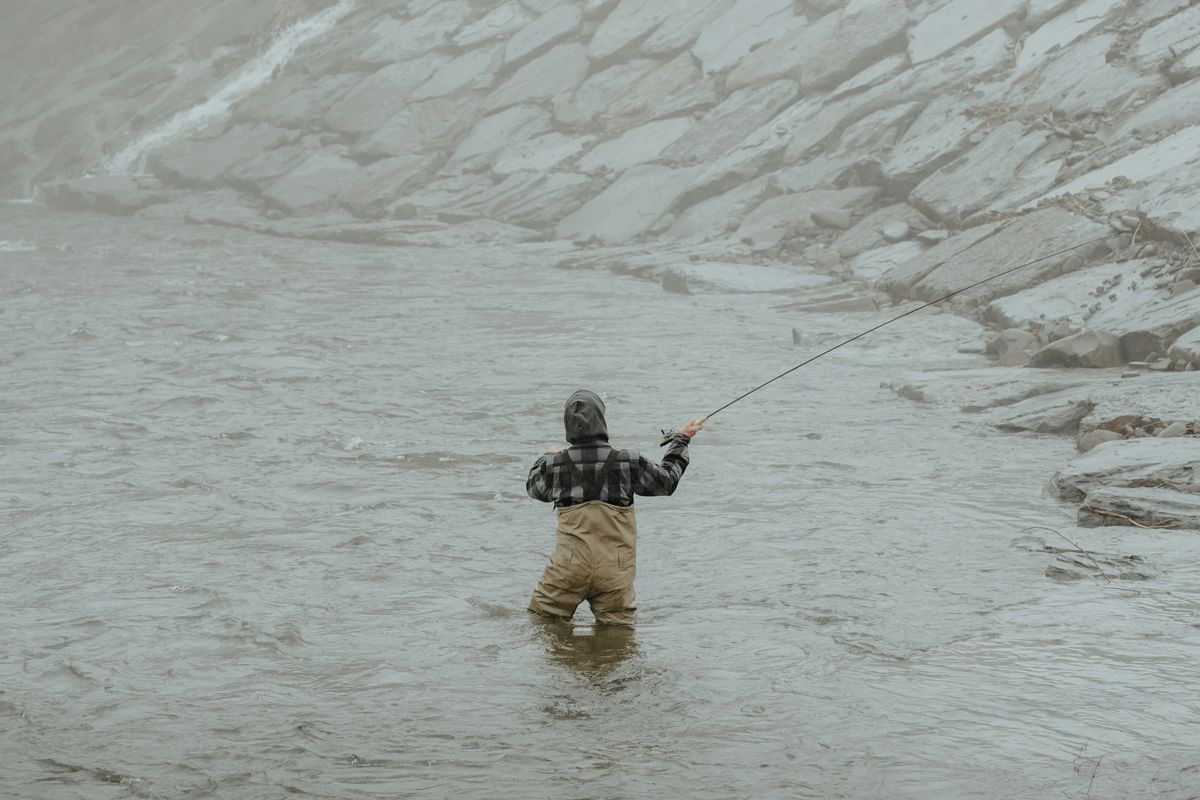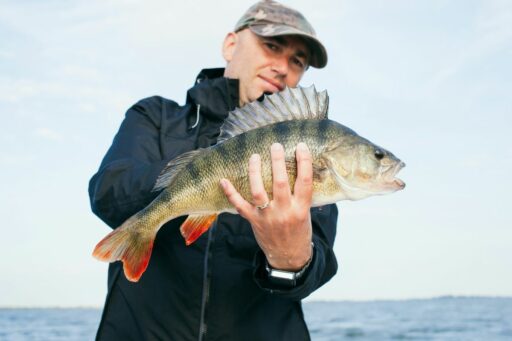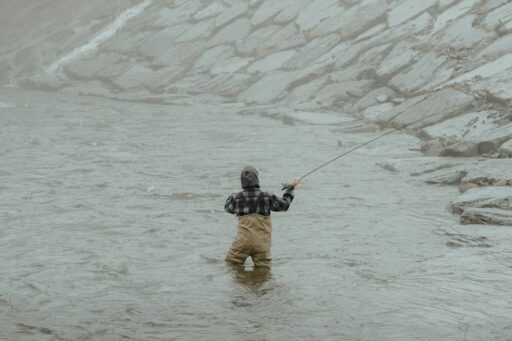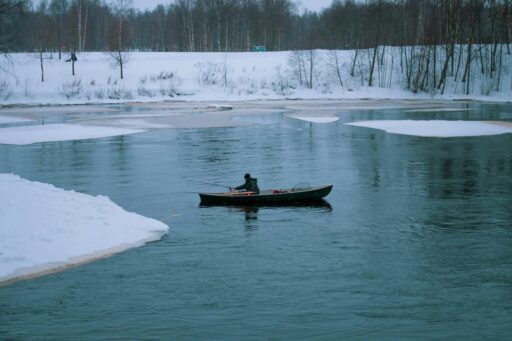Embarking on the quest for the perfect fly fishing rod can be as exhilarating as the sport itself. This guide is meticulously crafted to navigate you through the myriad of choices, ensuring you select a rod that not only suits your fishing style but also elevates your angling experience. Whether you’re a seasoned angler or a novice to the streams, understanding the subtleties of fly rod characteristics, matching rods to specific fishing techniques, and balancing budget with performance are crucial steps to achieving fly fishing mastery.
Key Takeaways
- Understanding rod action and power is essential for matching your fly rod to your casting style and the types of flies you’ll use.
- The length of the fly rod you choose should be based on the fishing environment and the species you’re targeting, with longer rods offering better line control.
- Material selection, from traditional bamboo to modern graphite, impacts the overall feel and performance of your fly rod, influencing both your casting and the fight with a fish.
- Selecting the right rod weight and flexibility is a critical decision that depends on the type of fish you’re after and the conditions of the waters you fish in.
- Regular maintenance and timely repairs are vital to prolong the life of your fly rod and ensure its performance remains optimal throughout your fishing adventures.
Understanding Fly Rod Characteristics

Deciphering Rod Action and Power
Understanding the dynamics of rod action and power is crucial for any angler looking to refine their fly fishing skills. Rod action is the term used to describe how much of the rod bends when pressure is applied to the tip. A fast action rod bends primarily near the tip, offering greater sensitivity and quicker hook sets, which is beneficial for detecting subtle bites. In contrast, a slow action rod bends closer to the butt, providing a deeper, more parabolic flex that can be advantageous for beginners due to its forgiving nature.
Rod power, or the rod’s resistance to bending, is equally important. It ranges from ultra-light, suitable for small fish and delicate presentations, to heavy, which can handle large fish and tough conditions. Matching the rod power to the species you’re targeting and the weight of the line you’re using will greatly enhance your fishing experience.
When selecting a fly fishing rod, consider the type of action and power that will best suit the fishing conditions and the species you aim to catch.
Here’s a quick reference to understand the correlation between rod action, power, and their applications:
- Fast action: Ideal for long casts and windy conditions; requires more skill to use effectively.
- Moderate action: A versatile choice that offers a balance between sensitivity and flex, making it suitable for a variety of fishing scenarios.
- Slow action: Best for short casts and delicate presentations; recommended for beginners or when using lighter flies.
The Significance of Rod Length
When selecting a fly fishing rod, the length can be a defining factor in your angling success. Longer rods can cast further, enhancing your reach in environments like open rivers or the surf where distance is key. Conversely, shorter rods offer greater precision, making them ideal for fishing around obstacles or in tight spots.
- Casting Distance: A longer rod can significantly outperform shorter ones by enabling casts that exceed 100 yards, crucial for reaching distant feeding grounds.
- Accuracy: Shorter rods are better suited for precise casting, necessary when navigating around obstacles or in congested areas.
Choosing the appropriate rod length is not just about personal preference; it’s about matching your gear to the fishing conditions and the species you’re targeting. An 8-10 weight rod with a length of 9 to 10 feet provides the backbone for vital casts, while also granting control and distance.
The right rod length marries the need for distance with the necessity for control. It’s a balance that, when struck correctly, can lead to a rewarding fly fishing experience.
Material Matters: From Bamboo to Graphite
The choice of rod material is a critical factor in the performance and feel of a fly fishing rod. Graphite rods are renowned for their stiffness and sensitivity, making them a top pick for anglers who need to detect the slightest nibbles from finicky fish. On the other hand, fiberglass rods are celebrated for their durability and flexibility, often recommended for beginners or those targeting species that benefit from a softer presentation.
Bamboo rods, while not as prevalent in today’s market, provide a distinct experience with their natural flex and traditional appeal. For those seeking a compromise, composite rods merge the best of both worlds, offering graphite’s sensitivity with the ruggedness of fiberglass.
When choosing your rod material, consider the following:
- Your most common type of fishing
- The species you target
- Your personal handling preference
Remember, the material of your rod will significantly influence your satisfaction and success on the water. Choose wisely to ensure a harmonious blend of functionality and enjoyment.
Matching Rods to Fishing Techniques

Fly Fishing for Freshwater Species
When targeting freshwater species such as trout and salmon, the choice of fly rod is crucial for a successful outing. Selecting the right fly rod with medium to fast action is essential for casting weighted flies with precision. The length of the rod should be matched to the type of water and fishing conditions, with options typically ranging from 7 to 10 feet.
The visual spectacle of a trout rising to a dry fly is what many anglers find most appealing about fly fishing. This is particularly true during significant bug emergences, such as the caddisfly hatches on Montana’s Missouri River or the Green Drake hatch in central Pennsylvania.
While fly fishing may be less common in regions like Southern California, there are still ample opportunities in mountain streams, reservoirs, and stocked lakes. To enhance your experience and increase your catch rate, consider the following gear:
- A fly rod with the appropriate action and length
- A matched weight fly line
- Quality flies that mimic local insect emergences
Remember, the Orvis Clearwater offers exceptional value and is highly recommended for all-purpose trout fishing.
Saltwater Fly Fishing: Going Beyond the Basics
When venturing into the realm of saltwater fly fishing, the stakes are higher and the gear must be up to the challenge. Selecting the right fly rod is crucial for battling the ocean’s powerful species like marlin and tarpon. These rods are built to withstand the harsh saltwater environment and the brute strength of the fish that inhabit it.
- Durability is key; look for corrosion-resistant materials and hardware.
- Power is necessary to cast larger flies and to manage the fight with big fish.
- Length should be considered based on the species targeted and the fishing conditions.
In saltwater fly fishing, every element of your gear must work in harmony. The rod, reel, line, and leader are all integral parts of a system designed to handle the ocean’s unpredictability.
It’s also essential to match your rod to the specific type of saltwater fishing you’ll be doing. Whether you’re sight fishing on flats or casting into the deep blue, the right rod can make all the difference. For instance, a 9-foot rod for an 8-weight line is a versatile choice that can serve well in a variety of saltwater scenarios.
Specialty Rods for Unique Fly Fishing Scenarios
When venturing into specialized fly fishing scenarios, selecting the right rod becomes even more critical. Specialty rods are tailored to excel in unique conditions, where standard rods may not suffice. For instance, anglers targeting skittish bonefish on crystal-clear flats will benefit from rods designed for stealth and precision.
In the realm of specialty rods, the Helios™ D 9′ 6-Weight Fly Rod stands out for its versatility. It’s a prime choice for those seeking consistent performance across various freshwater trout scenarios. Meanwhile, the Helios F 9′ 5-Weight Fly Rod Outfit is engineered for delicate presentations, and the Helios F 10′ 3-Weight Fly Rod Outfit caters to anglers who prioritize finesse over power.
The selection of a specialty rod should be a thoughtful process, considering the specific challenges and opportunities presented by the fishing environment.
For a clearer understanding, consider the following table outlining key features of specialty fly rods:
| Model | Length | Weight | Ideal Use Case |
|---|---|---|---|
| Helios™ D 9′ 6-Weight | 9 feet | 6-Weight | Versatile Freshwater |
| Helios F 9′ 5-Weight | 9 feet | 5-Weight | Delicate Presentations |
| Helios F 10′ 3-Weight | 10 feet | 3-Weight | Finesse Fishing |
Remember, the right specialty rod can elevate your fly fishing experience by providing the appropriate action, length, and power for your specific scenario.
The Fly Rod Selection Process

Assessing Your Fishing Environment
Before selecting your next fly fishing rod, it’s crucial to assess the environment where you’ll be fishing. Different environments pose unique challenges and requirements for your gear. For instance, fishing in a small mountain stream will demand a different rod than casting in the open ocean.
Consider the following factors when assessing your fishing environment:
- Water type: Freshwater or saltwater habitats have distinct conditions that affect rod choice.
- Space constraints: Tight spaces may require shorter rods for better maneuverability.
- Target species: The size and type of fish you’re aiming to catch will influence rod strength and flexibility.
It’s essential to match your rod to the conditions you’ll face to ensure optimal performance and enjoyment.
Remember, the perfect rod for someone fishing for marlin in the open ocean might not be the best choice for a serene mountain stream. Your environment dictates the necessary rod characteristics, so choose wisely to make your angling experience both memorable and rewarding.
Determining the Ideal Rod Weight and Flexibility
When selecting a fly rod, the weight and flexibility are crucial factors that directly impact your fishing experience. Choosing the right rod weight is essential for the type of fish you’re targeting. Fly rods range from ultra-light for delicate presentations to heavy for battling large gamefish. A common mistake for beginners is selecting a rod that’s too heavy, which can lead to fatigue and reduce the enjoyment of fishing.
Rod flexibility, or action, affects casting distance and accuracy, as well as the ability to fight fish. A fast-action rod bends primarily near the tip, offering more power for long casts and big fish, while a slow-action rod bends closer to the handle, providing a gentler presentation for smaller fish. Here’s a simple guide to help you match rod weight to the fish you’re after:
- 1-3 weight: Ideal for small trout and panfish
- 4-6 weight: Versatile for medium-sized trout and bass
- 7-9 weight: Suitable for larger freshwater species and light saltwater fishing
- 10+ weight: Designed for large saltwater species and heavy freshwater fish like pike
Remember, the goal is to balance the rod’s weight and flexibility with the fishing conditions and the size of the fish you’re aiming to catch. This balance will enhance your control and improve your overall fly fishing experience.
Balancing Budget and Performance
When selecting your next fly fishing rod, it’s crucial to find the right balance between cost and quality. Fly fishing enthusiasts often face the dilemma of choosing between premium rods with high performance and more affordable options that may not meet all their needs. To make an informed decision, consider the following points:
- Determine your budget range. Quality saltwater fly rods can vary in price, so finding the right balance between performance and cost is essential.
- Assess the performance features you need. Higher-priced rods often offer better sensitivity, durability, and casting accuracy.
- Look for the best value within your budget. Sometimes, mid-range rods provide the best compromise between cost and quality.
Remember, the most expensive rod is not always the best choice for every angler. Your skill level, frequency of use, and specific fishing conditions should guide your purchase.
Finally, don’t overlook the long-term value of a rod. A slightly higher initial investment might save you money in the long run if it means fewer replacements or upgrades.
Fly Rod Maintenance and Care

Routine Cleaning and Storage Tips
Proper maintenance of your fly fishing rod not only extends its life but also ensures peak performance on your next fishing adventure. Regular cleaning is essential to remove any dirt, salt, or grime that may have accumulated during use. After each outing, it’s advisable to gently clean your rod with mild soap and water, then dry it thoroughly before storage.
When storing your fly fishing equipment, it’s crucial to avoid places with extreme temperatures or high humidity, which can damage the rod’s material. A rod tube with a desiccant can help protect against moisture. Additionally, make sure to inspect your rods and reels for any signs of damage or wear. Loose screws or rust can compromise the integrity of your gear, so address these issues promptly.
To prevent damage to the reel’s drag system, it’s recommended to store your reels with the drag loosened. This simple step can prevent flat spots from forming on the drag washers, which could affect the reel’s performance. Here’s a quick checklist for safe storage of your fly fishing equipment:
- Inspect equipment for damage
- Clean and dry rods and reels
- Loosen the reel’s drag
- Store in a cool, dry place
- Use a rod tube with desiccant
Remember, taking the time to properly clean and store your fly fishing rod will pay dividends in the longevity and reliability of your gear.
Repairing Common Wear and Tear
Maintaining the integrity of your fly fishing rod is crucial for ensuring its longevity and performance. Regular inspection and timely repair of common wear and tear can save you from costly replacements down the line.
- Guides and Tip Tops: Check for grooves or rough edges that can fray the line. Replace if necessary.
- Ferrules: Ensure they fit snugly and are free of cracks. Apply ferrule wax to prevent sticking.
- Handle and Reel Seat: Look for any looseness or damage. Tighten or re-cork as needed.
- Blank: Inspect for nicks or scratches that could weaken the rod. Use fine sandpaper to smooth out minor imperfections.
While some repairs can be done at home, others may require professional attention. Don’t hesitate to seek expert help for complex issues to maintain your rod’s optimal condition.
Remember, a well-maintained rod not only performs better but also instills confidence on the water. By addressing wear and tear proactively, you ensure that your fly fishing adventures are not cut short by equipment failure.
When to Consider Rod Replacement or Upgrade
Fly fishing enthusiasts often form a sentimental attachment to their rods, but there comes a time when considering a replacement or upgrade is essential for continued success and enjoyment on the water. The decision to replace or upgrade should be based on several factors, including performance issues, advancements in technology, and changes in fishing preferences.
- Performance Issues: If your rod is no longer performing as it once did, it may be time for a replacement. Look for signs such as decreased sensitivity, difficulty in casting, or damage that affects the rod’s integrity.
- Technological Advancements: The fly fishing industry is continuously evolving, with new materials and designs that can enhance your fishing experience. Upgrading to a rod with the latest technology can provide a significant advantage.
- Personal Fishing Preferences: As you grow and evolve as an angler, your fishing style and preferences may change. A rod that once suited your needs might not be the best fit anymore.
It’s important to weigh the cost of a new rod against the benefits it will bring. Sometimes, investing in a new rod can reinvigorate your passion for fly fishing and lead to more memorable catches.
Finally, consider the longevity and warranty of your current rod. Some manufacturers offer lifetime warranties, which can influence the decision to repair or replace. Use the table below to help guide your decision:
| Factor | Repair | Replace |
|---|---|---|
| Cost | Low | High |
| Age of Rod | Moderate | New Technology |
| Performance | Declining | Improved |
| Warranty | Covered | Expired |
Remember, the right time to replace or upgrade your rod is when it will make a meaningful difference in your fishing experience.
Conclusion
Selecting the right fly fishing rod is a crucial step in enhancing your angling experience. Throughout this guide, we’ve explored various factors such as material, action, power, length, and the specific techniques suited for different types of water and target species. Whether you’re a seasoned angler or just starting out, understanding these elements will help you make an informed decision. Remember, the perfect rod is not just about performance; it’s also about how it feels in your hands and aligns with your fishing style. We hope this ultimate guide has provided you with valuable insights to choose a fly fishing rod that will bring you success on the water and enrich your connection with the art of fly fishing.
Frequently Asked Questions
How do I choose the right fly rod action for my fishing style?
Select a fly rod with medium to fast action for versatility and precision, especially when targeting trout, salmon, and other freshwater species. The action should match the weight of the fly line and the type of water you’re fishing in.
What are the benefits of different fly rod materials like bamboo and graphite?
Bamboo rods offer a traditional feel with a slower action, ideal for delicate presentations. Graphite rods are modern, lightweight, and provide a faster action for longer casts and better control in windy conditions.
Is rod length important when selecting a fly fishing rod?
Yes, rod length affects casting distance and control. Shorter rods (7 to 8 feet) are great for small streams, while longer rods (9 to 10 feet) provide better line control and are suited for larger bodies of water.
What should I consider when choosing a fly rod for saltwater fishing?
For saltwater fly fishing, look for a rod that’s corrosion-resistant with a strong backbone to handle larger, more powerful fish. A fast action and heavier line weight are also important for casting larger flies and dealing with windy conditions.
How can I maintain my fly rod to ensure its longevity?
Regularly clean your rod with mild soap and water, dry it completely before storage, and store it in a rod tube to protect it from damage. Inspect it for signs of wear and repair any damages promptly to maintain its performance.
When should I consider replacing my fly fishing rod?
Consider replacing your rod if it’s significantly damaged, if it no longer meets your fishing needs, or if there have been significant advancements in rod technology that could enhance your fishing experience.





